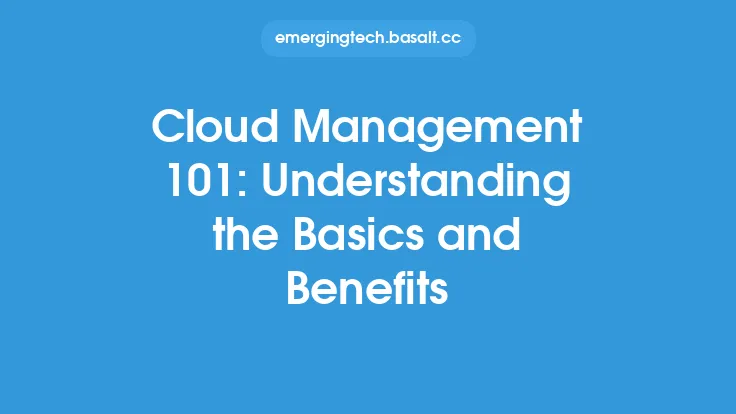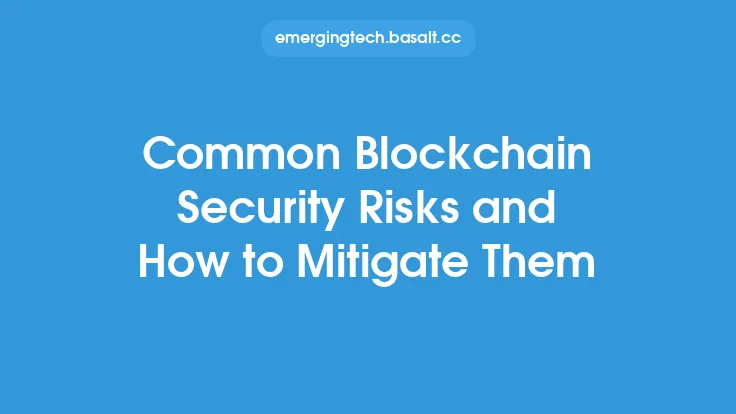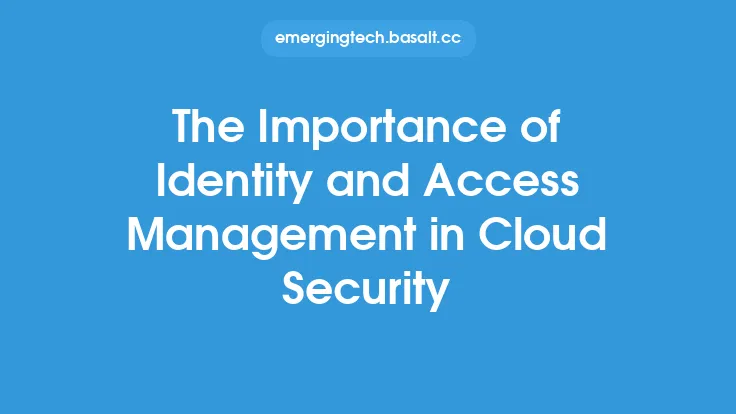As the world becomes increasingly digital, more and more businesses are turning to cloud computing to store, manage, and process their data. However, this shift to the cloud also introduces new security risks and threats that must be understood and mitigated. Cloud security is a critical aspect of cloud computing, and it's essential to have a comprehensive understanding of the threats, risks, and mitigations involved.
Introduction to Cloud Security Threats
Cloud security threats can be broadly categorized into several types, including data breaches, unauthorized access, denial-of-service (DoS) attacks, and malware infections. Data breaches occur when sensitive data is accessed or stolen by unauthorized individuals, while unauthorized access refers to the ability of hackers to gain access to cloud resources without permission. DoS attacks, on the other hand, involve overwhelming cloud resources with traffic in order to make them unavailable to legitimate users. Malware infections can also occur in the cloud, allowing hackers to steal data, disrupt operations, or take control of cloud resources.
Understanding Cloud Security Risks
Cloud security risks can arise from a variety of sources, including the cloud provider, the customer, and the network. Cloud providers may have vulnerabilities in their infrastructure or services that can be exploited by hackers, while customers may inadvertently introduce risks through their own actions, such as using weak passwords or failing to patch vulnerabilities. Network risks can also arise from the transmission of data between the customer and the cloud provider, as well as from the internet itself. Additionally, the shared responsibility model of cloud computing, where the cloud provider is responsible for securing the infrastructure and the customer is responsible for securing their data and applications, can create confusion and increase the risk of security breaches.
Cloud Security Mitigations
To mitigate cloud security risks, several measures can be taken. First, it's essential to choose a reputable cloud provider that has a strong track record of security and compliance. Customers should also implement robust security controls, such as firewalls, intrusion detection systems, and encryption, to protect their data and applications. Regular security assessments and penetration testing can also help identify vulnerabilities and weaknesses in the cloud environment. Furthermore, customers should ensure that their cloud provider has a comprehensive incident response plan in place, in case a security breach does occur.
Cloud Security Best Practices
Several best practices can be followed to ensure cloud security. First, customers should use strong passwords and multi-factor authentication to prevent unauthorized access to their cloud resources. They should also keep their operating systems, applications, and software up to date with the latest security patches and updates. Data encryption should be used to protect sensitive data both in transit and at rest, and access to cloud resources should be limited to only those who need it. Regular backups and disaster recovery plans should also be in place, in case data is lost or becomes unavailable.
The Importance of Cloud Security Awareness
Cloud security awareness is critical in preventing security breaches and ensuring the overall security of the cloud environment. Customers should be aware of the potential risks and threats associated with cloud computing and take steps to mitigate them. They should also be aware of the shared responsibility model and understand their role in securing their data and applications. Cloud security awareness training should be provided to all users, to ensure they understand the importance of cloud security and how to protect themselves and their organizations from potential threats.
Cloud Security Standards and Frameworks
Several cloud security standards and frameworks are available to help guide cloud security efforts. These include the Cloud Security Alliance (CSA) Cloud Controls Matrix, the National Institute of Standards and Technology (NIST) Cybersecurity Framework, and the International Organization for Standardization (ISO) 27017 standard. These standards and frameworks provide a set of best practices and guidelines for securing cloud environments and can help customers ensure that their cloud provider is meeting the necessary security requirements.
Conclusion
In conclusion, cloud security is a critical aspect of cloud computing that requires a comprehensive understanding of the threats, risks, and mitigations involved. By choosing a reputable cloud provider, implementing robust security controls, and following best practices, customers can help ensure the security of their data and applications in the cloud. Cloud security awareness and training are also essential in preventing security breaches and ensuring the overall security of the cloud environment. By following cloud security standards and frameworks, customers can ensure that their cloud provider is meeting the necessary security requirements and that their data and applications are protected from potential threats.





